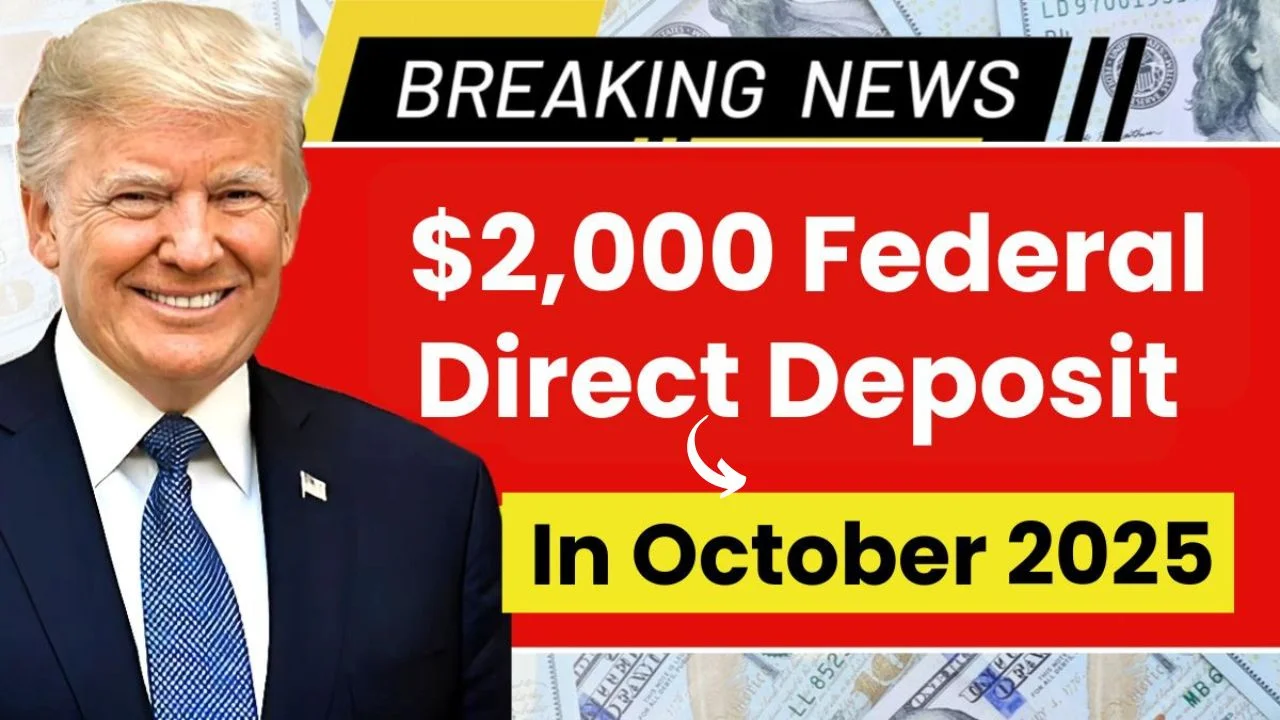Millions of Americans are anxiously waiting for some financial breathing room this fall—and the federal government’s proposed $2,000 Direct Deposit Payments might be exactly that. Slated for October 2025, this relief measure aims to help families, seniors, and low-income citizens deal with the relentless squeeze of inflation, rising rents, healthcare costs, and everyday essentials that just keep getting more expensive.
The plan would automatically send $2,000 directly into the bank accounts of eligible recipients, including Social Security beneficiaries and seniors, without the need for any separate application. Think of it as an instant boost—no paperwork, no waiting for approval.
Why the $2,000 Payment Matters
This new round of payments comes as part of the federal government’s ongoing commitment to support Americans hit hardest by economic pressures. Inflation and high living costs have drained savings and strained budgets across the country. By sending out these direct deposits, officials hope to give people immediate relief—helping them cover rent, pay medical bills, or simply keep food on the table.
Economists also see a broader purpose here. When families have extra cash, they spend it on groceries, transportation, and local services. That spending, in turn, fuels small businesses and stimulates local economies. So, while the payment supports households, it also gives the U.S. economy a much-needed push toward stability.
Who’s Eligible for the $2,000 Payment?
Eligibility will likely mirror earlier stimulus programs. Seniors on Social Security, SSI, SSDI, and Veterans Affairs (VA) benefits are among those expected to receive payments automatically. Low-income families and individuals who meet federal income guidelines will also qualify.
Here’s the breakdown:
- Individuals earning up to $75,000 per year
- Married couples earning up to $150,000 jointly
- U.S. citizens and permanent residents with valid Social Security Numbers
If you already receive monthly benefits from Social Security or similar programs, you don’t need to lift a finger—the money should arrive through the same payment method you currently use.
When to Expect the Payments
The Social Security Administration (SSA) will handle distribution using its standard monthly payment calendar. To avoid delays, payments will roll out in stages:
- October 1, 2025: SSI beneficiaries
- October 3, 2025: Recipients who began receiving benefits before May 1997
- October 8, 2025: Birthdays between the 1st and 10th
- October 15, 2025: Birthdays between the 11th and 20th
- October 22, 2025: Birthdays between the 21st and 31st
This staggered schedule ensures that payments are processed smoothly without system slowdowns.
How the Money Will Be Delivered
Most recipients will receive their funds via direct deposit—the fastest and most secure method. Others may get their payment loaded onto a Direct Express Card, while a limited number of people could still receive paper checks in the mail, which may take a bit longer to arrive.
Both the IRS and SSA are encouraging direct deposit to minimize delays and reduce the risk of fraud.
The Bigger Picture: Economic Ripple Effects
Beyond individual relief, the $2,000 direct deposits are expected to have a ripple effect throughout the economy. The money will help people pay bills, buy groceries, and manage rising healthcare costs—especially for retirees and those on fixed incomes.
At the same time, consumer spending can strengthen local businesses and supply chains, creating a reinforcing cycle of economic activity. In short, the plan offers both humanitarian aid and an economic boost—a win-win scenario if executed properly.
What’s Confirmed So Far
As of now, the program has not been officially confirmed by federal authorities. The proposal is still under review, and final approval will depend on forthcoming legislation. Once green-lit, payments would likely begin rolling out in October 2025, starting with direct deposits.
No separate application will be required—just as in past stimulus efforts, the IRS and SSA will rely on existing tax records and benefit enrollment data to identify eligible recipients.
Stay Alert Against Scams
The IRS has issued a strong reminder: it will never contact individuals by phone, text, or email asking for personal banking details. Any such messages are scams. Official updates will appear only on IRS.gov or the Social Security Administration’s website.
If you’ve recently changed your bank account or mailing address, it’s wise to update your information as soon as possible to avoid delays.
Final Thoughts
The proposed $2,000 federal direct deposit for October 2025 could be a lifeline for millions struggling to keep up with everyday costs. For seniors, veterans, and low-income families, this relief may offer not just financial stability but peace of mind.
While final confirmation is still pending, the plan reflects the government’s continuing effort to help Americans weather tough economic times. Keep an eye on official sources for updates—and if approved, this payment could be the helping hand many households have been waiting for.
